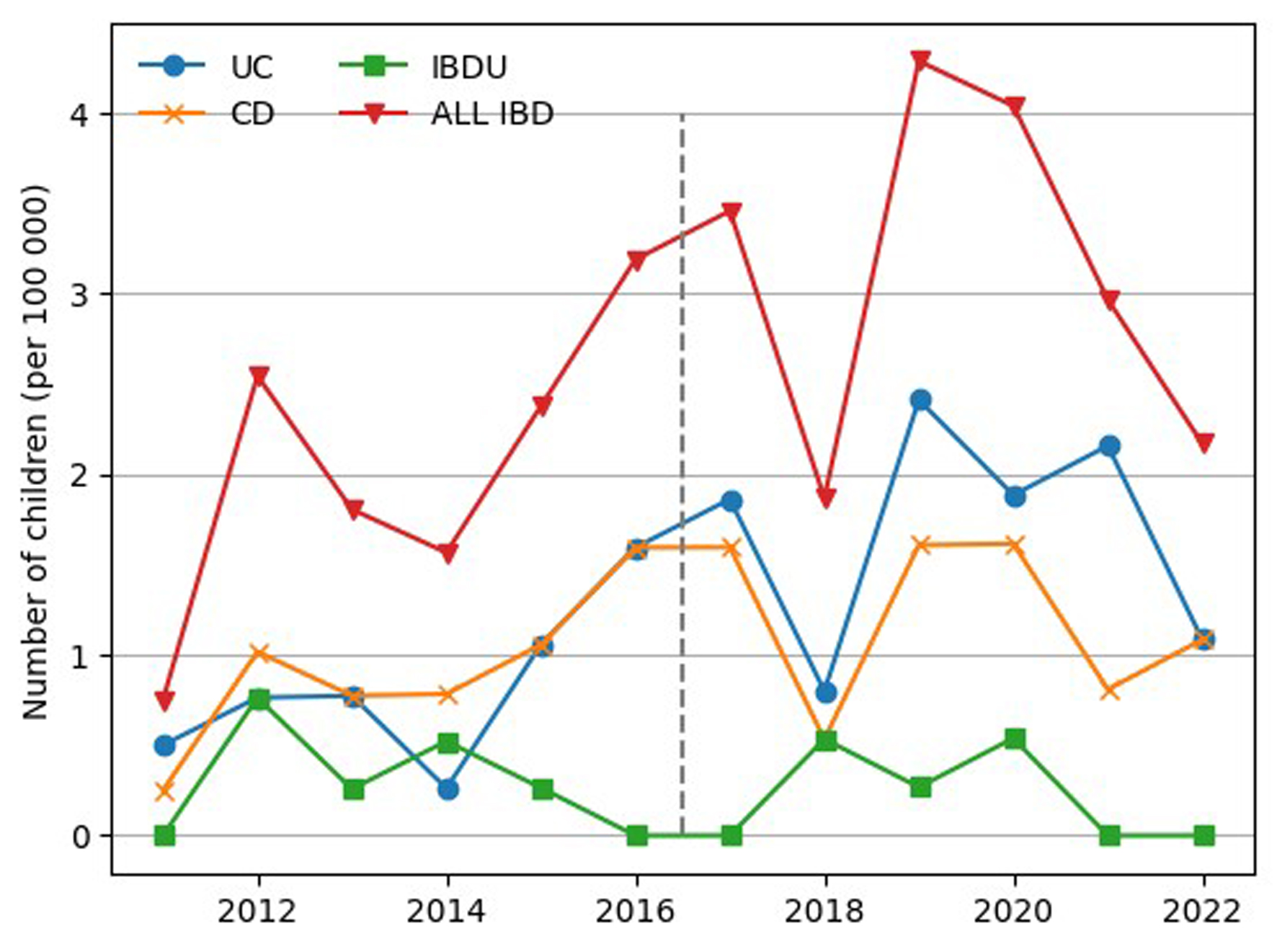Incidence of Inflammatory Bowel Disease in Children
DOI:
https://doi.org/10.14740/gr2007Keywords:
Inflammatory bowel disease, Children, Incidence, PolandAbstract
Background: Many of the patients with inflammatory bowel disease (IBD) are children and adolescents, and the incidence of pediatric IBD is increasing. However, understanding epidemiological trends is crucial for effective prevention and treatment and reducing the local and global burden of IBD. Little data exist regarding the incidence of IBD in the child population in the Kujawsko-Pomorskie Voivodeship. The aims of this study were to evaluate the incidence of IBD in the period 2011 - 2022 and to compare the data regarding three types of IBD, namely ulcerative colitis (UC), Crohn’s disease (CD), and unclassified inflammatory bowel disease (IBD-U), from the first half, i.e. 2011 - 2016, to the second half, i.e. 2017 - 2022.
Methods: This retrospective study analyzed the medical records of 118 IBD patients hospitalized at the Department of Pediatrics, Allergology and Gastroenterology from the central-northern part of Poland.
Results: Of the 118 patients diagnosed with IBD, 48 (40.68%) had CD, 57 (48.31%) had UC, and 13 (11.01%) had IBD-U. Between 2011 and 2016, 48 new IBD patients were diagnosed, with a further 70 new cases added between 2017 and 2022, representing a significant increase over the period (P = 0.033). Also, a significant increase was seen for UC, i.e. rising from 19 new cases between 2011 and 2016, to 38 between 2017 and 2022 (P = 0.015). The increase in CD was not significant.
Conclusion: The incidence of pediatric IBD in the central-northern district of Poland is lower than other countries, it nonetheless appears to be increasing, particularly in children with UC. The number of IBD diagnoses in children has increased by nearly 50% over the last 6 years.

Published
Issue
Section
License
Copyright (c) 2025 The authors

This work is licensed under a Creative Commons Attribution-NonCommercial 4.0 International License.









